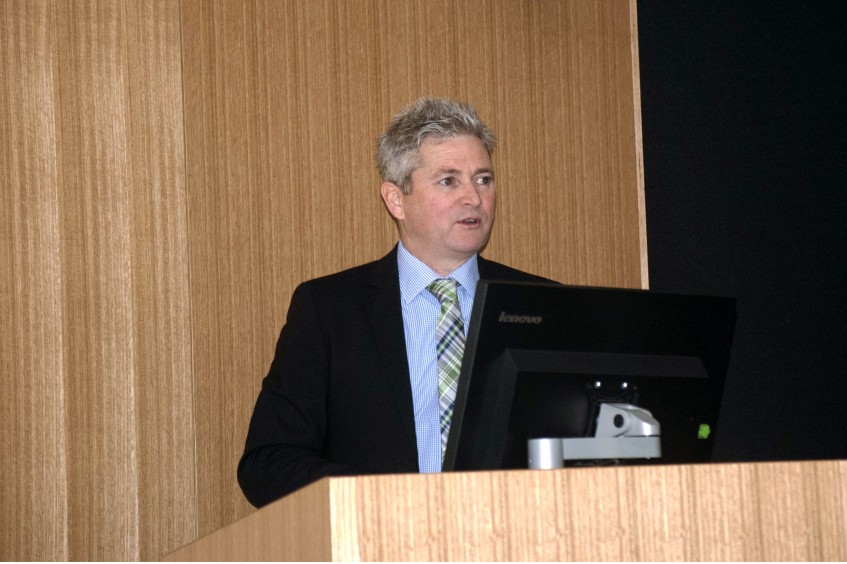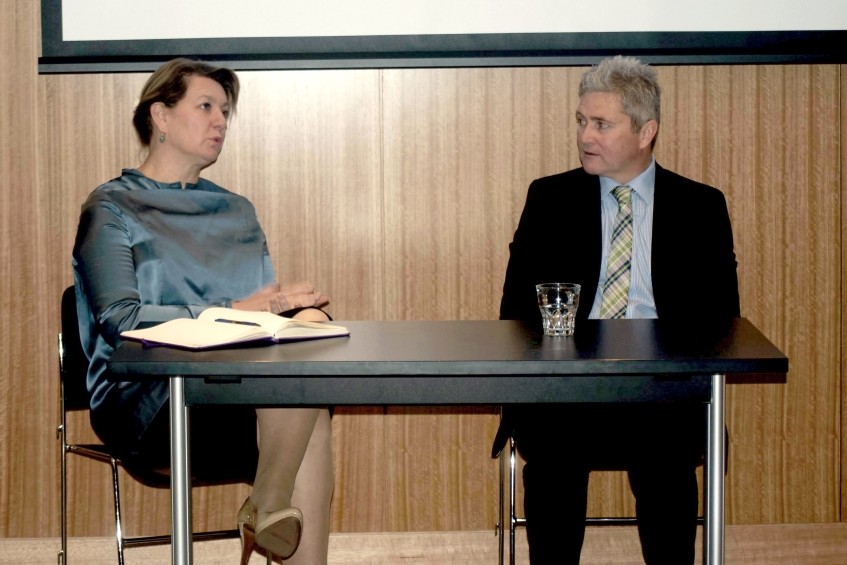Digital technologies demand new approaches to education

Developments in information technology have given teachers and students the opportunity to learn in many different ways according to Catholic Education Office Head of Digital Transformation, Aidan McCarthy, who spoke at Knowledge Week. Photo: Caroline Smith
By Caroline Smith
Developments in information technology have given teachers and students the opportunity to learn in many different ways – and this is something the education system needs to harness, says Catholic Education Western Australia (CEWA) Head of Digital Transformation Aidan McCarthy.
Speaking at the City of Perth Library on 18 October as part of Perth Knowledge Week, Mr McCarthy said new approaches to learning could be prompted by the ways in which students were already engaging with the world through new technology.
“All over the world, students are not only communicating and sharing, they’re also visually aware of what’s happening globally, in the media and in their own lives,” he said.
“So we’re seeing movement from teacher-led classrooms to project-based learning.
“Most countries are pursuing enquiry-based learning in a more significant way. In one of our schools – Kolbe College in Rockingham – their whole year 9 curriculum has been completely changed to be in essence, challenge-based learning.”
The program at Kolbe Catholic College incorporated the use of small groups, competition and reflection for students in the challenge based learning (CBL) program.
Teachers should be unafraid to use new technology across all areas of learning, Mr McCarthy said, adding that knowing how to do this was a challenge that education systems around the world were grappling with.
“There are some countries that will bring technology in just for assessments, and then put them back in the cupboard for the rest of the year, because they’re not comfortable using them on a continual basis,” he said.
Instead, teachers could energise the learning process with platforms such as Skype, which could allow students to engage with experts in a particular area to gather information.

“In the digital era, we have experts all over the world, and you can bring them into the classroom,” Mr McCarthy said.
“I spent a lot of time with the Gnaraloo Turtle Team up north, and you can book any one of their four scientists, bring them into your classroom, and they’ll talk about the turtles, and topics like climate change, etcetera. These are real practical-style activities that students are really engaged with, so it brings that reality of their own discussions to life.”
Students could also make contact with other classes around the world through the use of Microsoft’s Mystery Skype program, he said.
Another technological benefit to education was the growing use of analytics, in which student-related data could be used to shape teaching approaches and decisions about their schooling.
“It’s very hard to personalise the learning experience when you’ve got 25 to 30 students in a classroom, particularly when they come to class for the first time, but we have so little data about them,” Mr McCarthy said.
While the use of new technologies was encouraging students to think conceptually – a skill that was increasingly attractive to employers – schools and education departments would need to adapt by offering more flexible pathways, Mr McCarthy said.
“If we think about jobs of the future, we know that there are opportunities around conceptual skills, but what it means from an education perspective is that there’s a growing need to answer the question, what is our curriculum, and how does it need to change?” he said.
“We’re still very rigid in terms of a final exam at the end of year 12 that suddenly decides where a student’s career should be.”
By contrast, he added, countries like Finland were offering students the opportunity to move between vocational and university pathways.
